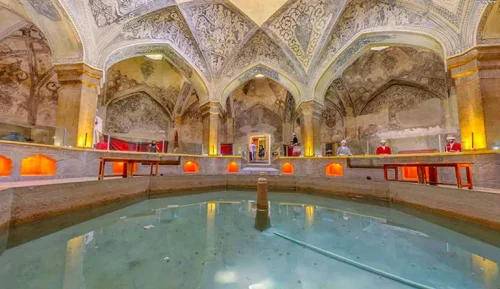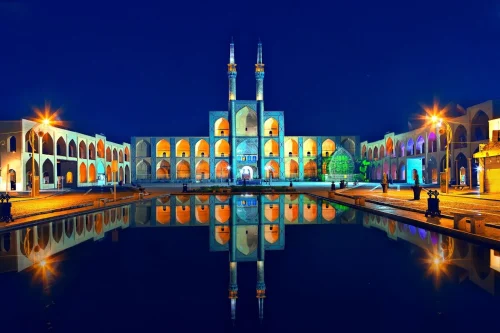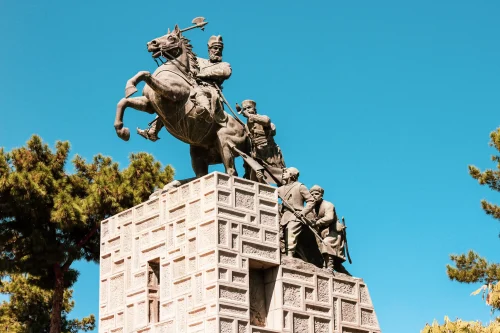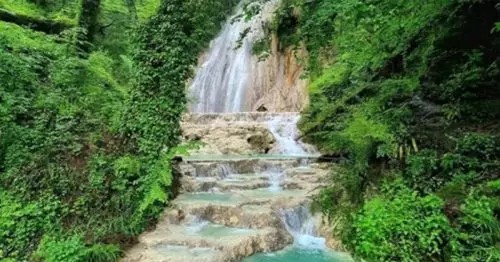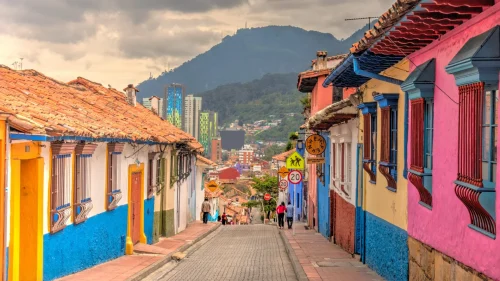Dizmar Forest Tabriz | Access Route + Attractions
Dizmar Forest Tabriz is one of the most beautiful forests in northwestern Iran, located near the city of Tabriz. This beautiful forest with its mild climate and pristine nature is recognized as a popular tourist destination.
If you’re looking for a short and pleasant trip to nature, Dizmar Forest Tabriz can be an excellent choice for you. In this article, we will explore the access route to Dizmar Forest Tabriz and the attractions of this beautiful forest.
Access Route to Dizmar Forest Tabriz
To access Dizmar Forest Tabriz, you can use various routes. One easy access route is via the Tabriz-Ahar road. By traveling about 30 kilometers from Tabriz towards Ahar, you will reach the Dizmar junction. The road on the right leads to Dizmar Forest and the village of Dizmar.
Another access route to the forest is by using the Tabriz-Basmenj road and then the Basmenj-Dizmar road. This route is about 40 kilometers long and passes through a paved and high-quality road.
Attractions of Dizmar Forest Tabriz
Dizmar Forest Tabriz, with its pristine and beautiful nature, has a variety of tourist attractions, including the following:
- Dizmar Waterfall: This waterfall, about 15 meters high, is one of the most beautiful tourist attractions of Dizmar Forest.
- Mineral Springs: In Dizmar Forest, there are multiple mineral springs that are beneficial for treating certain illnesses.
- Dizmar Cave: Dizmar Cave, with its relatively small entrance and deep depth, is one of the natural attractions of this beautiful forest.
- Dizmar Forest: The forest itself, with lush trees and great plant diversity, is one of the most important tourist attractions of this region.
In addition to the natural attractions, Dizmar Forest Tabriz also has several villages and historical sites, each with their unique attractions.
Tips for Visiting Dizmar Forest Tabriz
For visiting Dizmar Forest Tabriz, it is advisable to consider the following tips:
- Before going to the forest, make sure to gather necessary information about the weather and climate conditions.
- Wearing suitable clothing and footwear is essential for walking in the forest.
- Bringing enough drinking water and food is crucial to avoid water and food shortages during the trip.
- Avoid littering in the forest.
- Considering this forest is located in a mountainous region, traveling with a group for added safety is recommended.
Dizmar Forest Tabriz, with its pristine nature and unique beauty, is one of the best options for a memorable day or several days’ excursion in nature.
For more information about tourist tours and trips to Dizmar Forest Tabriz, you can contact 02191091190 or email info@irancharter.ir.
Jangal Dizmar Tabriz: Untouched and Stunning Nature
The Jangal Dizmar of Tabriz is one of the most beautiful protected areas in the East Azerbaijan Province. With its diverse vegetation and breathtaking natural landscapes, it’s an ideal place for nature tourism and relaxation. Spanning over 60,000 hectares, it lies across the borders of Varzeghan, Khoda Afarin, and Jolfa counties, featuring high biodiversity of plants and animals.
Key features include the Aras River running through the forest, ancient trees that have thrived here for years, and the refreshing clean air. These elements make Jangal Dizmar one of Tabriz’s top natural attractions, drawing many tourists annually.
Access Routes to Jangal Dizmar Tabriz
Access to Jangal Dizmar from Tabriz is possible through the counties of Varzeghan, Khoda Afarin, and Jolfa. The quickest route from Tabriz is via Varzeghan city, approximately 250 kilometers away. From Varzeghan, local roads can easily reach the Dizmar protected areas.
Travelers coming from Jolfa will travel about 135 kilometers, passing through beautiful villages like Khamarloo and Jananloo. Those coming from Khoda Afarin will face more complex routes, requiring special equipment and ample readiness for hiking.
Natural and Sightseeing Attractions of Jangal Dizmar Tabriz
Jangal Dizmar Tabriz, with its unparalleled natural landscapes, offers a variety of attractions for visitors, including hot springs, beautiful rivers, and natural waterfalls, each providing a tranquil and pleasant atmosphere for tourists.
Historic and pilgrimage sites like Javid Paeiz and Zehne Hafshejan Springs are also nearby, offering a blend of nature tourism and historical interest. These sites, with their beautiful architecture and rich history, create a unique spot where culture meets nature.
The Flora and Fauna of Jangal Dizmar Tabriz
The flora of Jangal Dizmar Tabriz includes native trees such as oak, maple, wild almond, and hawthorn, alongside other indigenous plants, creating high diversity. This forest is also home to a variety of medicinal plants and beautiful flowers that attract many.
Fauna found here include brown bears, Persian fallow deer, Persian leopards, wolves, jackals, and wild goats. The diverse species highlight the area’s significance as a biosphere reserve in Iran, providing a pristine and healthy wildlife habitat.
Best Time to Visit Jangal Dizmar Tabriz
The best time to visit Jangal Dizmar Tabriz is during spring and summer when the weather is mild, and conditions are ideal for hiking and camping. Vegetation is at its peak, making natural landscapes appear more beautiful.
In autumn, foliage adds unique beauty to the forest, though some paths may become more challenging due to rain and dense fog. In winter, although parts of the forest are snow-covered, some paths may become inaccessible due to snow and water shortages.
Tourist Activities in Jangal Dizmar Tabriz
Jangal Dizmar Tabriz offers a variety of facilities for tourists, enabling activities such as long hikes through forest trails, camping in designated areas, wildlife observation, and photographing natural landscapes. For those interested in mountaineering, special trails provide a more challenging and thrilling experience.
Visiting nearby pilgrimage sites offers a cultural and spiritual experience, combining nature tourism with historical site visits for travelers.
Accommodation and Camping in Jangal Dizmar Tabriz
There are limited accommodation facilities in Jangal Dizmar Tabriz, primarily camps equipped with basic amenities. These camps allow visitors to spend the night in nature and enjoy the forest’s tranquility. Some designated camping areas offer facilities like water and electricity access for tourists.
Some nearby villages offer local accommodations such as guesthouses and family-run hotels, providing a cultural and pleasant experience for visitors.
Safety Tips and Travel Advice to Jangal Dizmar Tabriz
Visiting Jangal Dizmar Tabriz requires specific preparations for a safe and trouble-free experience. Key precautions include preparing suitable equipment, bringing water and food, wearing appropriate clothing for weather changes, and using accurate maps. It’s also advisable to avoid large groups and travel individually or in small groups.
Following the protected area’s rules and valuing environmental conservation is important. Refrain from unauthorized fireworks, collect trash, and respect wildlife to ensure Jangal Dizmar Tabriz remains an untouched natural attraction.
Attractions Around Jangal Dizmar Tabriz
The vicinity of Jangal Dizmar Tabriz features various attractions that can enrich your journey, including Quz Qala-Seikh Dam Lake, the historical bridges of Khoda Afarin, and the Buyuk Chay River. Each of these places offers unique features, providing a different experience of nature and history to visitors.
Visiting Javid Paeiz and other nearby pilgrimage sites also offers a combination of nature tourism and cultural interests. These places, with their beautiful architecture and natural environment, are among the top attractions of the region.
FAQ
- Where is Jangal Dizmar located?
- Jangal Dizmar is located in East Azerbaijan Province, near Varzeghan county and the Arasbaran region. This forest is part of the protected Dizmar area and is located near the Aras River.
- What is the best time to visit Jangal Dizmar?
- The best time to visit Jangal Dizmar is in spring and summer when the weather is more temperate, and the vegetation is at its peak lushness. It also has unique autumn beauty, but winters can be more challenging due to snow and cold.
- How can one access Jangal Dizmar?
- To access Jangal Dizmar, you can travel via Varzeghan city. The main routes include the Varzeghan to Jananloo road and then continue towards Dizmar. Using a private car or charter are suitable options.
- What is the vegetation cover of Jangal Dizmar like?
- Jangal Dizmar’s vegetation is diverse, including trees like oak, maple, wild almond, hawthorn, and wild rose. Various medicinal plants and diverse flowers also grow in this area.
- What animals can be found in Jangal Dizmar?
- A variety of animals like brown bears, Persian fallow deer, Persian leopards, wolves, jackals, wild goats, boars, wild cats, and foxes inhabit Jangal Dizmar. Various birds of prey and other species are also present.
- Is Jangal Dizmar dangerous?
- Jangal Dizmar may pose dangers due to wild animals like bears and leopards. Parts of the forest are also difficult to access. Safety precautions and having the right equipment are recommended.
- What tourist facilities are available in Jangal Dizmar?
- Jangal Dizmar offers various tourist facilities, including camping spots, hiking trails, natural springs, and pilgrimage sites. Some areas require professional equipment for access.
- What historical attractions are near Jangal Dizmar?
- Near Jangal Dizmar, the Babak Fort is a significant historical attraction dating back to ancient Iran and the Sasanian era. The Pir Davood shrine, a site for pilgrimage and tourist rest, is also nearby.
- What are the environmental protection laws in Jangal Dizmar?
- Jangal Dizmar is declared a protected area with restricted access. Laws on biodiversity protection, the prohibition of illegal hunting, and maintaining environmental cleanliness are enforced here.
- What activities can be done in Jangal Dizmar?
- In Jangal Dizmar, you can enjoy camping, hiking, mountaineering, wildlife watching, nature photography, and visiting sacred sites.
- How can you camp in Jangal Dizmar?
- For camping in Jangal Dizmar, it’s best to use designated camping areas. Bring proper equipment and follow safety guidelines. It’s also helpful to connect with locals for necessary guidance.
- What are the climatic impacts on Jangal Dizmar?
- Jangal Dizmar is influenced by diverse climatic conditions, including hot and dry summers and cold, wet winters. These climatic changes significantly affect the forest’s plant and animal life.
- What types of trees and plants are found in Jangal Dizmar?
- Major trees in Jangal Dizmar include oak, maple, wild almond, hawthorn, and wild rose. Various medicinal plants and diverse flowers found in this forest increase its biodiversity.
- Does Jangal Dizmar have pilgrimage sites?
- Yes, Jangal Dizmar has pilgrimage sites like the Pir Davood shrine that tourists and pilgrims can visit, enjoying nature’s tranquility.
- What is the climate like in Jangal Dizmar?
- The climate in Jangal Dizmar is temperate, with warm summers and cold winters. Spring with blooming plants and autumn with colorful foliage provides special attractions for tourists.
- What are the best tourism routes around Jangal Dizmar?
- The best tourism routes around Jangal Dizmar include mountain paths, forest trails, and routes to nearby historical attractions. The Aras River and natural springs are also scenic spots in this area.
- What are the essential facilities for traveling to Jangal Dizmar?
- For traveling to Jangal Dizmar, having camping equipment, wearing appropriate clothing for weather conditions, carrying maps and a GPS, and observing safety guidelines are essential. Also, plan your trip with other groups.
- Does Jangal Dizmar have catering facilities?
- In some areas of Jangal Dizmar, there are catering facilities like small restaurants and rest stops, but most areas are designed for camping and nature tourism. It’s best to plan ahead with adequate food and drinks.


